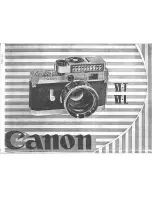
13
Named Stars
Common name listing of the brightest stars in the sky.
Named Objects
Alphabetical listing of over 50 of the most popular deep
sky objects.
Double Stars
Numeric-alphabetical listing of the most visually stunning
double, triple and quadruple stars in the sky.
Variable Stars
Select list of the brightest variable stars with the shortest
period of changing magnitude.
Asterisms
A unique list of some of the most recognizable star
patterns in the sky
.
CCD Objects
A custom list of many interesting galaxy pairs, trios and
clusters that are well suited for CCD imaging with the
CPC telescope.
IC Objects
A complete list of all the Index Catalog deep-sky objects.
Abell Objects
A complete list of all the Abell Catalog deep-sky objects.
5.
Info
:
Displays coordinates and useful information about objects selected from the NexStar database.
6.
Tour:
Activates the tour mode, which seeks out all the best objects for the current date and time, and
automatically slews the CPC to those objects.
7.
Enter:
Pressing
Enter
allows you to select any of the CPC functions and accept entered parameters.
8.
Undo:
Undo
will take you out of the current menu and display the previous level of the menu path. Press
Undo
repeatedly to get back to a main menu or use it to erase data entered by mistake.
9.
Menu:
Displays the many setup and utilities functions such as tracking rate and user defined objects and many
others.
10.
Scroll Keys:
Used to scroll up and down within any of the menu lists. A double-arrow will appear on the right
side of the LCD when there are sub-menus below the displayed menu. Using these keys will scroll through those
sub-menus.
11.
Rate:
Instantly changes the rate of speed of the motors when the direction buttons are pressed.
12.
RS-232 Jack
: Allows you to interface with a computer and control the CPC remotely.
H
H
a
a
n
n
d
d
C
C
o
o
n
n
t
t
r
r
o
o
l
l
O
O
p
p
e
e
r
r
a
a
t
t
i
i
o
o
n
n
This section describes the basic hand control procedures needed to operate the CPC. These procedures are grouped into
three categories: Alignment, Setup and Utilities. The alignment section deals with the initial telescope alignment as well as
finding objects in the sky; the setup section discusses changing parameters such as tracking mode, tracking rate and setting
filter and slew limits; finally, the last section reviews all of the utilities functions such as PEC, polar alignment and
hibernating the telescope.
A
A
l
l
i
i
g
g
n
n
m
m
e
e
n
n
t
t
P
P
r
r
o
o
c
c
e
e
d
d
u
u
r
r
e
e
s
s
In order for the CPC to accurately point to objects in the sky, it must first be aligned to known positions (stars) in the sky.
With this information, the telescope can create a model of the sky, which it uses to locate any object with known
coordinates. There are many ways to align the CPC with the sky depending on what information the user is able to provide:
SkyAlign
use the internal GPS receiver
to acquire all the necessary time/site information needed for the CPC to create an
accurate model of the sky. Then the user can simply point the telescope to any three bright celestial objects to accurately
align the telescope with the sky.
Auto Two-Star Align
will ask the user to choose and center the first alignment star, then
the CPC will automatically select and slew to a second star for alignment.
Two-Star Alignment
requires the user to identify
and manually slew the telescope to the two alignment stars.
One-Star Align
is the same as Two-Star Align however only
requires you to align to one known star. Although not as accurate as the other alignment methods, One-Star Align is the
quickest way to find and track bright planets and objects in Altazimuth mode.
Solar System Align
will display a list of
visible daytime objects (planets and the moon) available to align the telescope. Finally,
EQ North and EQ South
alignments are designed to assist you in aligning the CPC when polar aligned using an equatorial wedge. Each alignment
method is discussed in detail below.
"Altazimuth" or "Alt-Az" refers to a type of mounting that allows a telescope to move in both altitude (up and down)
and azimuth (left and right) with respect to the ground. This is the simplest form of mounting in which the telescope is attached
directly to a tripod without the use of an equatorial wedge.
S
S
k
k
y
y
A
A
l
l
i
i
g
g
n
n
Sky Align must be used with the telescope mounted in altazimuth. With Sky Align, the GPS receiver links with and acquires
information from 3 of the orbiting GPS satellites. With this information, the built-in GPS system calculates the scope’s
location on Earth with an accuracy of a few meters and calculates universal time down to the second. After quickly making
Definition
Summary of Contents for CPC 1100
Page 1: ...I IN NS ST TR RU UC CT TI IO ON N M MA AN NU UA AL L...
Page 58: ...58 APPENDIX E MAPS OF TIME ZONES...
Page 59: ...59...
Page 60: ...60...
Page 61: ...61...
Page 62: ...62...
Page 63: ...63...
Page 64: ...64...
Page 65: ...65...














































